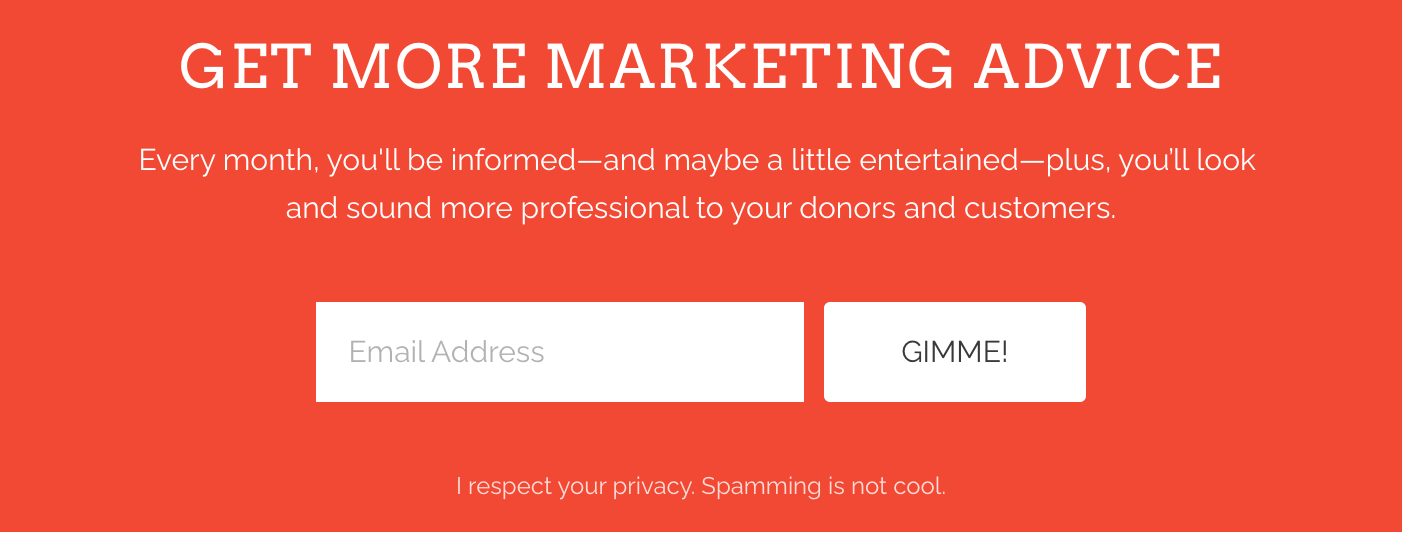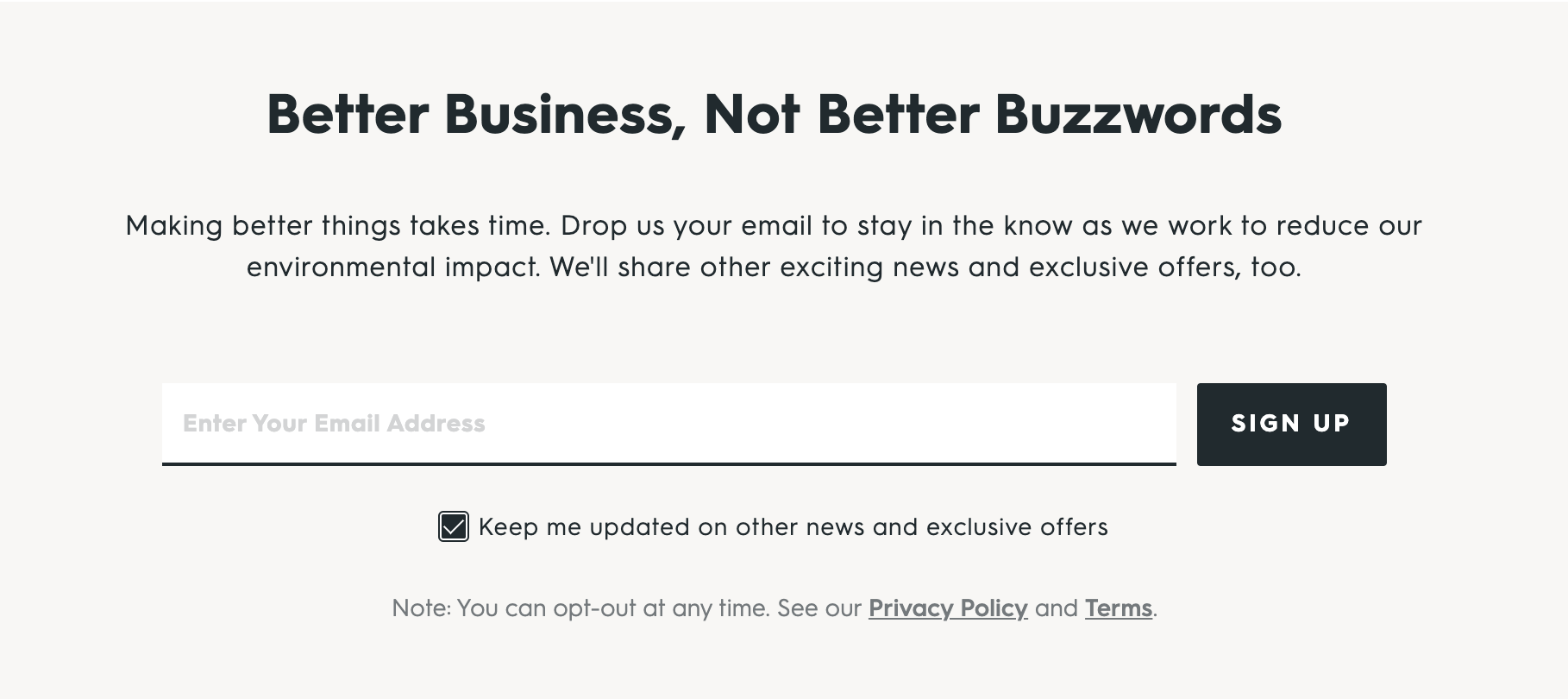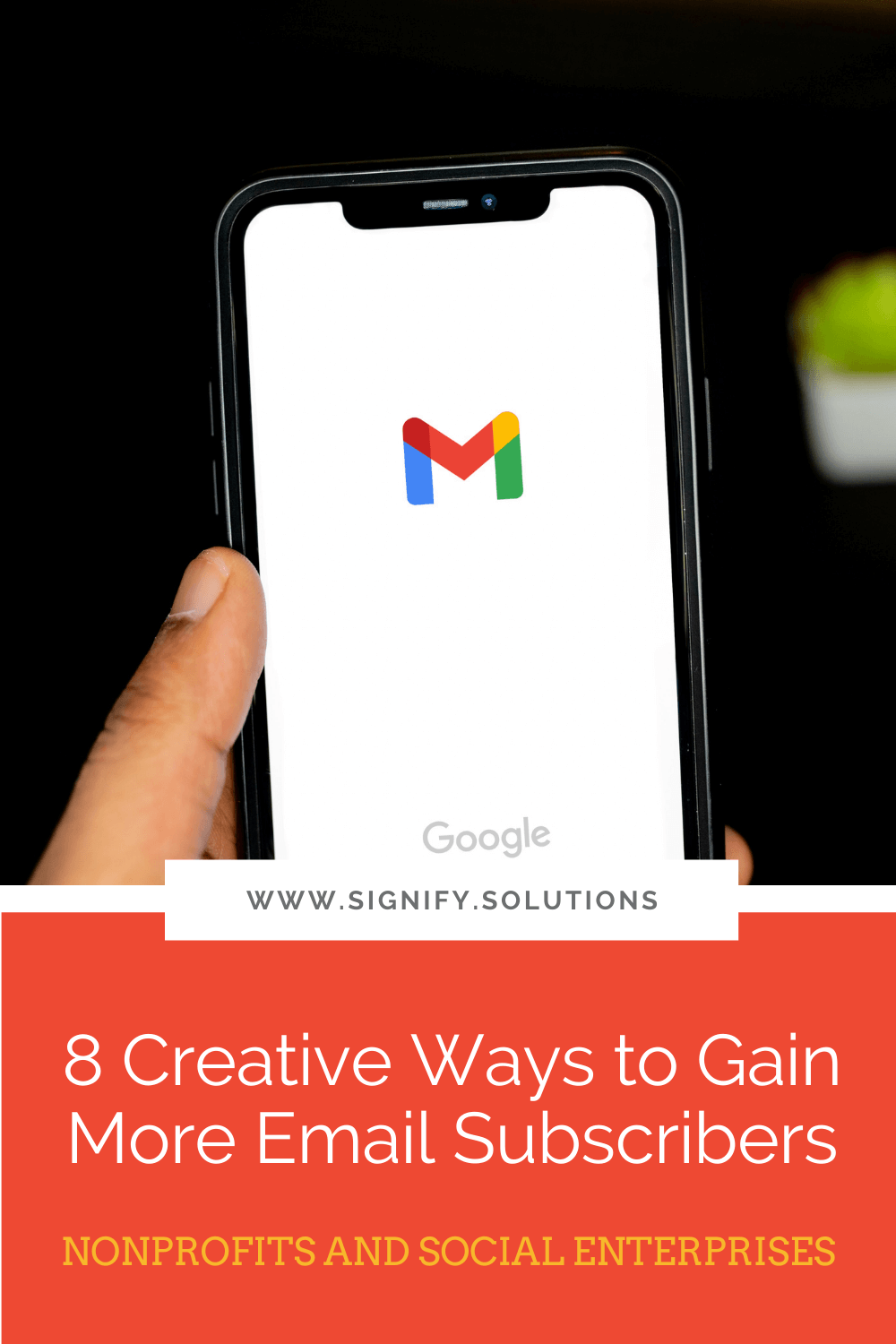As we head into a new year, one (quite important) thing seems to be at the forefront of all our minds: the environment. Every day we are inundated with more news about climate change, and it just seems to be getting worse.
Instead of becoming overwhelmed or losing hope, though, we should be taking a harder look at our own habits, both personally and professionally. Reducing, reusing, and recycling can make a difference—and so can our business practices.
I attended my first Sustainable Brands Conference in October 2021 and was inspired by the examples of many companies that are already making big strides . . . and paving the way for others to do the same.
And it’s clear that this isn’t a trend; it’s a movement. In fact, according to Andrew Winston, author of The Big Pivot and one of the conference speakers, the search term “sustainability” has grown 10 times since 2015, with more and more people wanting to empower themselves to become more eco-conscious. Like the proactive and caring people in the Signify community, these people want their purchases and their support for organizations to reflect that value, too.
Companies and nonprofit organizations must take the lead and make an effort to build more sustainable models for our collective future. The demand for transparency and environmental efforts from all stakeholders is growing, and regardless of the pressure, we should all want to help keep this planet we call home safe, clean, and in good shape for future generations.
Here are some key takeaways that I learned from the Sustainable Brands conference that can help your organization become more eco-aware and eco-friendly.
What to Remember When Starting Your Environmental Journey
There were several overarching themes from the conference that I found particularly helpful when thinking about how to take action. Here are four things to keep in mind as you begin the journey towards a more sustainable business.
Be transparent
As briefly mentioned above, transparency is a big one to keep top of mind. It seemed to be on every speaker’s mind and was reiterated over and over again. Virginie Helias and Victor Aguilar of Procter & Gamble advised being upfront and honest about your successes and your failures. We can’t be perfect, but your audience values your effort towards creating a greener business, and they want to see it.
Go carbon positive
We’ve all heard the common environmental buzzwords like “carbon emissions” and “greenhouse gases,” and we now know how harmful they are and how they contribute to climate change. Going carbon positive means taking more carbon and greenhouse gases out of the environment than you put in. It’s a step beyond carbon neutral. We need to do more than the bare minimum now (“carbon neutral”) and incorporate practices that help us stay carbon positive.
Treat your employees well
Ethical business practices go hand-in-hand with creating a more sustainable organization, too. People want to support organizations that pay livable wages and treat their employees well. And when you follow this, you’re attracting the right people to your business who are aligned with your purpose. Treating your team well means building a strong foundation full of people who truly care about your organization and cause, and giving them the energy and motivation to keep your mission moving forward.
Educate your audience
Not only can you take action within your organization, but it’s also important to consider how you can help educate the masses. Your efforts can inspire people to make simple, day-to-day changes on an individual level as well. Eco-friendly brand messaging can serve as a resource for your audience and teach them how to change their behaviors. Collaboration internally and externally is vital in getting everyone on board—and we need everyone!
An example of this that was given is Tide and how they began educating people on the benefits of washing in cold water. It was an idea that everyone could understand in a 30-second commercial, but it was also a step people could easily take to make a difference and feel good about their choices. How can you do the same?
Eco-Friendly Practices for Product Creators and Sellers
One of the hardest parts of building a sustainable organization is knowing where to start. If this is your struggle, you are not alone.
The best place to start is to simply take a look at where you are currently and perform a bit of an eco-friendly audit. From there, you can begin to set some goals for yourself and your organization.
A participant from a study conducted by one of the presenting companies summed up what most people want very nicely: "A good product at a fair price from a company that treats its employees well, has a clean supply chain, and cares about the planet." If you’re a product seller, here are three places you can start to make that happen:
Evaluate your source materials
Packaging is one of the most effective marketing channels, but is it also effective for your sustainability goals? If you sell products, consider switching to more compostable or recyclable materials such as cardboard and paper, or more recently developed materials like bagasse paper and mycelium (made of sugarcane fiber pulp and mushrooms, respectively). If you have to use plastic, try to stick to one type so customers can more easily recycle it.
This can apply to more than just sold products, too. Whatever materials you use for your organization, see if you can make some more eco-friendly swaps.
You’re already invested in doing good and making an impact, so evaluating where your products come from is just another step you can take for that mission. Are they fair trade? Can you source locally to support the local economy and cut down on transportation? How are your suppliers committed to sustainability?
Reduce your waste
The pandemic has changed how most of us work, with many office spaces becoming smaller or getting cut altogether. If you do still have an office space, reducing your waste can be as simple as eliminating single-use items like coffee cups, or donating items that are no longer needed so they don’t end up in the trash (and can potentially go to someone who really needs them!).
In the early days of the pandemic, I saw an office donate their toilet paper to anyone who needed it since all employees had moved to work from home and supplies were just sitting in an empty space. This was a great way to ensure nothing was wasted, and it even made the local news!
If you work from home full time, you can take this a step further by looking at how you can reduce your energy usage. This is a double benefit because it can also help you cut costs! Invest in energy-efficient appliances if you can (it’ll actually save you money in the long run), unplug unused appliances, switch to LED bulbs, regularly clean and replace air filters, and turn off lights when no one is in the room.
Align your marketing materials with your sustainable practices, too. Send more digital communications and source sustainable swag items like reusable water bottles, organic cotton T-shirts, or canvas tote bags. Your audience will love seeing you make an effort to be more green.
Contribute to, or collaborate with, environmental groups
Can you donate regularly to environmental programs? For example, you could donate a portion of your proceeds to an environmental impact program during a period of time, or offer to plant five trees for every 10 products sold.
Or, can you partner with another environmentally focused organization for a joint fundraiser or campaign? Maybe you can donate supplies or provide goods or services to one! Maybe you can create co-branded content to support each other. These efforts can be incredibly impactful.
Two organizations to consider supporting are Carbonfund.org and 1% for the Planet. Carbonfund.org makes it easy and affordable for anyone to “reduce and offset their climate impact and hasten the transition to a clean energy future.” 1% for the Planet inspires businesses to “support environmental solutions through annual memberships and everyday actions.” Both of these organizations make amazing contributions and are great resources!
A good example of these principles is Chipotle, who buys more local ingredients than any other restaurant and who has some of the highest animal welfare standards. They also have a roundup feature in their app to support farmers and causes they care about, and they donate about 33% of their sales, as Brand Marketing Vice President Stephanie Perdue mentioned in her presentation. Take a look at their values page to get some inspiration.
Making some of these adjustments, big or small, is a great way to align your organization or business with more sustainable practices. Not only is this great for the planet, but it’s also great for your business!
Communicate Your Sustainability Mission
One of the presentations at the Sustainable Brands conference was led by Etienne White, Vice President of Brands for Good, and focused on “giving sustainability the storytelling it deserves.” One of his points that really stuck out to me was to beware of the “green hush.” This is essentially when you’re doing important work but not talking about it.
It’s clear that people want to support businesses with ethical and environmental practices. In a presentation from Amazon, it was revealed that Climate Pledge Friendly products have 60% higher click-through rates - that’s incredible and noteworthy!
People value progress over perfection. It’s easy to get wrapped up in what you’re not doing, but if you’re taking steps to be better that’s still huge! So show it off. Talk about what you’re doing in order to attract a value-aligned audience who wants to not just be a customer but a stakeholder. In doing so, you’re also spreading valuable knowledge so others can make improvements, too.
Craft a mission statement that reflects your values and commitment to sustainability. Etienne advises to try and find the sweet spot between what the world needs, what people want, and your unique offer. Think about who your audience is, figure out what outcome you want, and remember to communicate your mission clearly. Be careful about the claims you make and ensure you understand them before you try to convey them.
You can also choose one specific goal and communicate that to your audience. For example, Petco has committed to having 50% sustainable products by 2025, according to their Customer & Market Insights Manager, Eleni Kardaras. Nestle has also promised to advance regenerative food systems at scale and hopes to be net-zero by 2050, said Aude Gandon, Global Chief Marketing Officer.
These are huge goals. If you can make that kind of commitment, do it and tell your stakeholders! It is terrific for your audience to know and invites their accountability. Try adding a mission statement to your website, include it in your code of ethics, highlight it in your marketing, or post about it on your social channels.
Here’s a great mission statement from the nonprofit Fashion Revolution to get your gears turning: “We campaign for a clean, safe, fair, transparent and accountable fashion industry. We do this through research, education, collaboration, mobilization and advocacy.” It doesn’t have a specific number, but it absolutely communicates intentionality.
Focus on advocating for sustainability and educating others instead of getting bogged down in the doom and gloom. The goal is to change behaviors, not just change minds, as Etienne notes. People want to be empowered and inspired, so talk about your progress and encourage public action.
Use Storytelling That Empowers
As we know, storytelling is powerful. We use it to appeal to our audience’s emotions and to share the importance of our mission. It’s not only how you gain support, loyalty, and trust, but also how you gain integral donations and/or sales. It’s time to craft a new story in business now, and that’s one of sustainability.
Bruce Reynolds, Social Impact and Brand Marketing Specialist for Be the Change Associates, encourages organizations to look at sustainability through social, economic, and environmental lenses. What is the story your organization is telling when you think about these three areas? Are you happy with it?
If not, it’s time to create a new one! In the Storytelling that Empowers workshop of the conference, the speakers reiterated that your story should be simple, consistent, and scalable. Emotion drives action, so get clear on your why. What’s your call to action?
Yes, this can be a serious topic, but your story doesn’t have to be boring or depressing! Provide hope and inspiration for your audience. Make it personal. Give actionable, scalable solutions or advice. Focus on educating others.
You will also see more companies and nonprofits begin to address how their mission aligns with Environmental, Social, and Governance (ESG) strategy and Sustainable Development Goals (SDG). As a cause-focused organization, elements like these should already be pretty clear to you, but now it may be time to address your environmental impact as well.
Invest time into creating solid messaging and then get it out there! Make sure to run it by key stakeholders first, though, just to ensure it’s clear, correct, and effective. From there you can put it on your website, print it on your packaging, and include it in some of your communications.
Build From the Inside Out
The first place your story should live is inside your organization. According to one of the speakers (sorry I’m forgetting who to credit!), 93% of upper-level executives feel like their companies need to take a social and environmental stance, and 61% of customers find it hard to understand where a company stands or what their environmental efforts are.
You have to start building sustainability and telling your story internally first. Everyone in your organization should have a hand in impact and be well informed about your goals. Amanda Nusz, Senior Vice President of The Target Foundation, advises defining the words that matter to your organization. Make sure everyone has the same definitions and truly understands them. You and your team have to believe in your goals and model them for your commitment to really shine through.
In a 2021 Mastercard survey, 85% of adults said they are willing to take action on climate change. Statistics from NextGen also revealed that 72% of Gen Z say they have been greatly affected by climate change, and 60% are also in favor of restructuring the economy for equality and the environment.
Despite all this support, there is a lot of skepticism, particularly among younger generations, for what companies and organizations are doing to help these issues. Organizations like yours have to take the lead on sustainability improvements and empower and influence the public to become activists, too. At a minimum, you can provide some of the tools—information, data, resources—to help raise awareness and make a change.
In Heidi Hackemer’s (Executive Creative Director of Oatly North America) keynote, she talked about creating an emotional door, or a gateway that gets regular people intrigued. Incorporate strong messaging and a clear mission with tangible, scalable action from the inside out and you’ll draw more people—and more support—to your organization.
One example is ECOfashion Corp, who announced they will be putting QR codes into their clothing tags for people to track the supply chain of their product, said Founder and CEO Marci Zaroff. This is a great way to get your audience involved, stay accountable, build credibility, share your values, and be transparent in your efforts.
One thing the pandemic really seemed to solidify is a great need for immediate change. We cannot return back to normal. We must keep improving and building better, more sustainable systems. This planet is the only one we have, so we need to take better care of it and each other.
Though it may seem daunting or intimidating at times, we all truly do have the power to enact change. The Sustainable Brands Conference filled me with hope and assurance of just that.
And if you’re ready to get started or solidify your own next steps, Sustainable Brands has even created a Brand Transformation Roadmap to help you navigate this challenge. Start small and slowly build-up to the bigger, more intensive actions. The planet, your audience, and your future supporters will thank you. You got this!
PIN THIS POST FOR LATER:
I’m Kristi Porter, and I help cause-focused organizations understand and execute effective marketing campaigns so they can move from stressed to strategic. Your resources may be limited, but your potential isn’t. Whether you’re a nonprofit, social enterprise, or small business who wants to give back, I’ll show you how to have a bigger impact.




































































